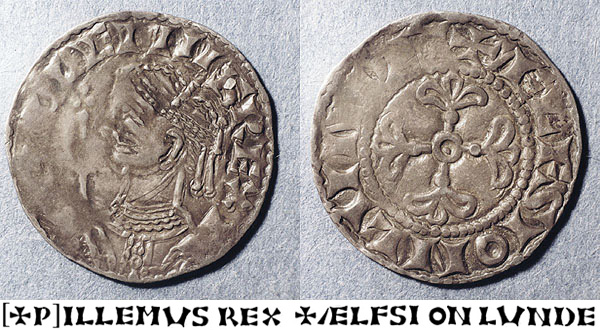
|
Background
The Norman coins of England begin with those of William I (the Conqueror) after his victory over the last Anglo-Saxon king, Harold II, at the Battle of Hastings in 1066, and continue through those of William II (Rufus), Henry I, and Stephen. There has been considerable debate over the past 100 years as to the ordering and dates of issuance for each type struck. Analysis of die links and mules (different type obverse/reverse combinations) has determined the ordering of types for most of the issues, but the dates of issuance for each type is still somewhat uncertain.
The dates presented here are a result of combining the most current research with correlation of astronomical iconography to actual celestial events. Full details are presented in a chapter of my book, Astronomical Symbols on Ancient and Medieval Coins, which is a complete re-write of my earlier publication.
Coinage
William I
Type I (1066-67) - The profile left/cross fleury penny was struck soon after William's victory. The example shown here was struck by Aelfsi in London.

|
Type II (1067-70) - The bonnet/cross pyramids penny was struck soon after William established control over larger portions of England, and the pyramids may represent Halley's comet of 1066 that was taken as an omen for his victory at Hastings. The example shown here was struck by Eadwine in London.
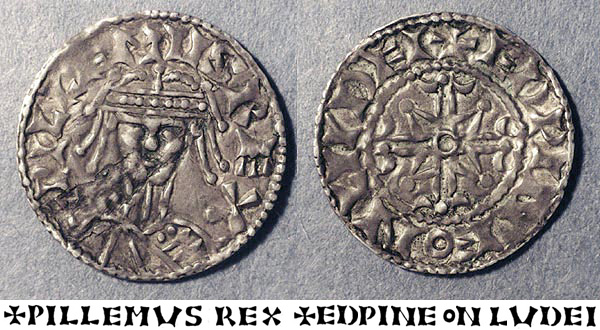
|
Type III (1070-73) - The canopy/quadrilateral fleury penny was struck after William's Easter coronation at Winchester in 1070. The example shown here was struck by Ceorl in Bristol.
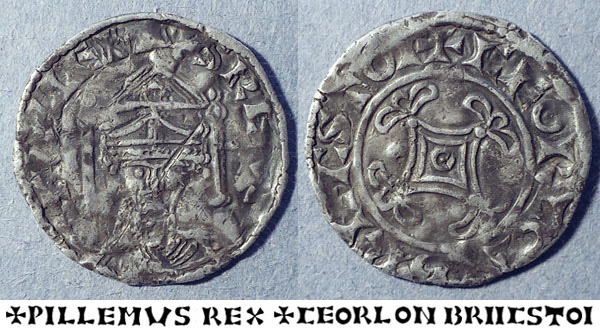
|
Type IV (1073-76) - The two sceptres/cross fleury over saltaire botonne penny was struck about midway between the Type III and Type V pennies. The example shown here was struck by Godinc in London.
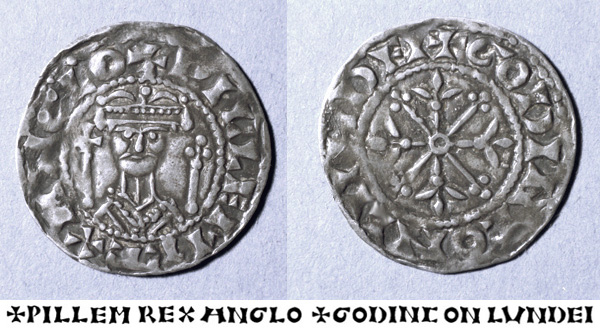
|
Type V (1076-79) - The two stars/cross with pyramids penny was struck soon after the appearance of a bright comet on November, 1075, and the two stars represent the new comet and Halley's of 1066. The example shown here was struck by Manna in Canterbury.
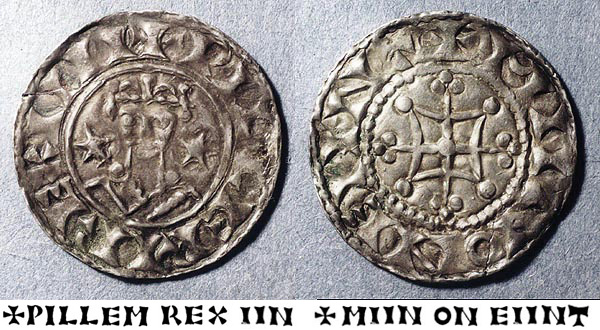
|
Type VI (1079-82) The rare sword type penny was struck between the two stars and the Type VII pennies.This example was struck by Ulf in Lincoln.
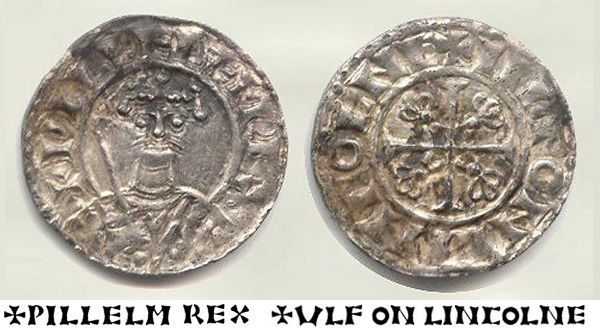
|
Type VII (1082-84) - The profile right type penny is the rarest of the pennies of William I. This example was struck by Wulfwine in London.
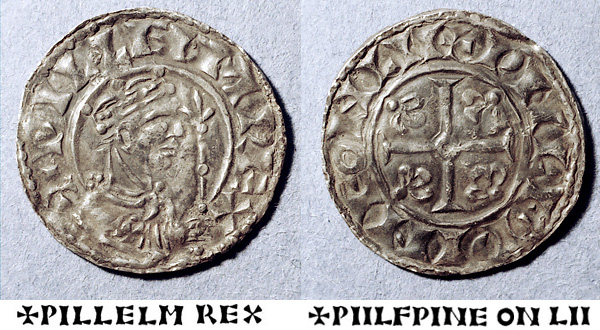
|
Type VIII (1084-88) - The PAX penny was struck at the end of reign of William I and continued into the reign of William II. The example shown here was struck by Aelfred in London.
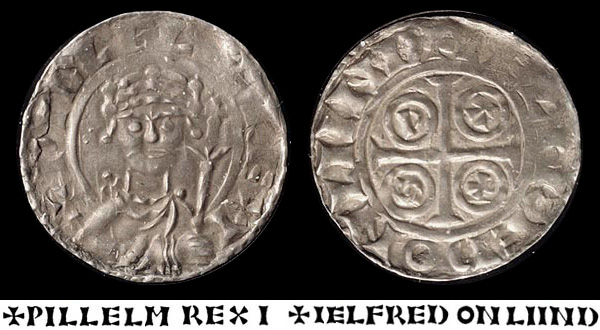
|
Type VII/VIII mule (1084) - Sometimes, dies from two different types were erronously used to strike a coin. This error type is called a "mule," and they were supposed to have been caught at the mint and melted down. However, in some extremely rare cases, mules made their way out of the mint and survived. Mules play an important role in determining the sequence of types. This example has a reverse die of Aestan and was struck in Winchester.
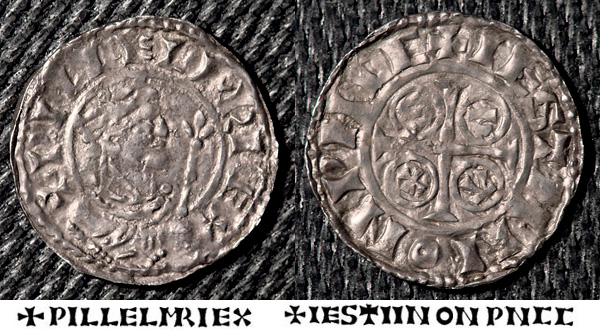
|
William II
Type I (1088-91) - The profile right penny was struck early in his reign. The example shown here was struck by Brunic in London.
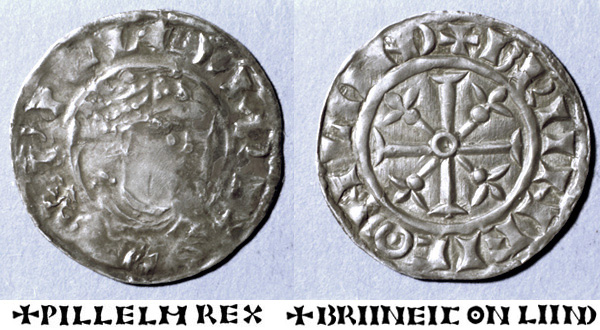
|
Type II (1091-94) - The sword penny was struck between the profile right and two stars types. The example shown here was struck by Godric in Hastings.
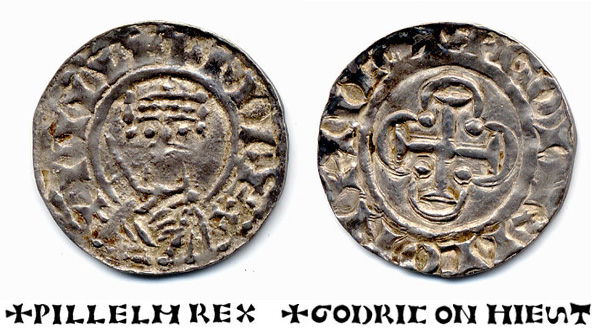
|
Type III (1094-96) - Two varieties of the cross voided/two stars type penny are found with the first having the stars omitted. The no stars variety was struck at mints in Dover, Hastings, Northampton, and Norwich. The stars may represent the annular solar eclipse of September, 1093, and dies without the stars may have be produced prior to the eclipse. The Hastings variety shown here was struck by Dorman, and the stars variety was struck by Edwine in Chichester.
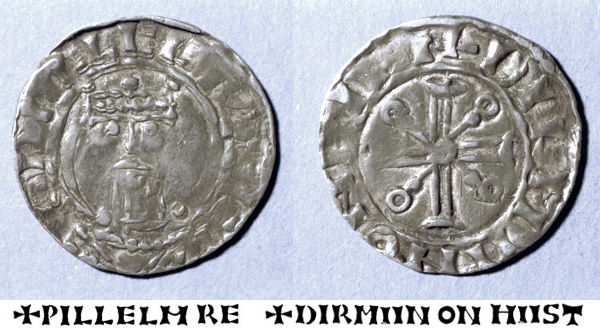
|
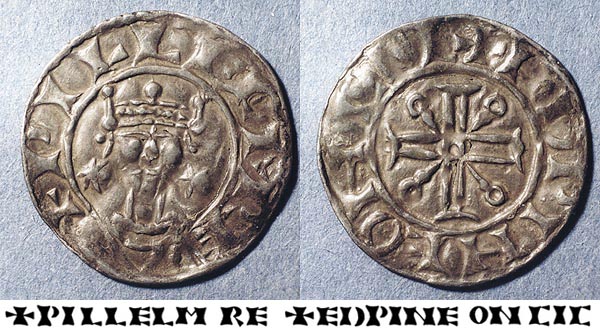
|
Type IV (1096-98) - This bust with sword penny is similar to type II but with a different reverse. The example shown here was struck by Lifinc in Winchester, and is the third known example.
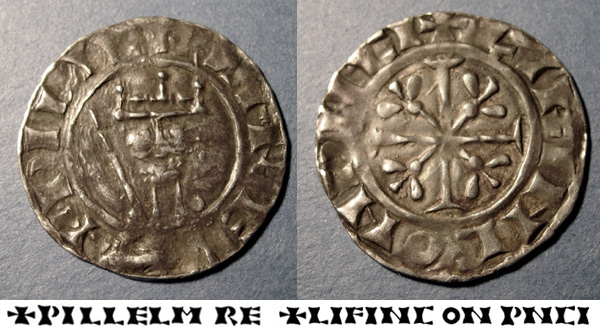
|
Type V (1098-1100) - The bust is next to star on the obverse, and the reverse has a cross fleury with pyramids (piles), and is the last type of William II. The pyramids may represent the comet seen in October of 1097. This example was struck by Theoderic in London, and is believed to be unique. (ex. R.P. Mack Collection (SCBI Mack #1491); ex. G.C. Drabble (Glendining, 4-6 July 1939, #633)
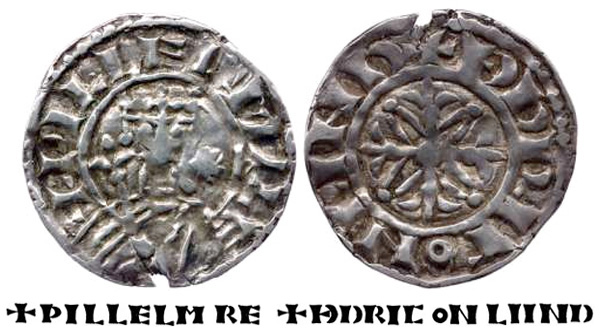
|
Henry I
Type I (1100-02) - Bust with annulets type. This example was struck by Lęsinc in York and is extremely rare and believed to be unique. Although a Laising is recorded as a moneyer at York for later types of Henry I (type X onwards), this is probably a coin of the Lęsinc who is recorded as a moneyer under William II; the long time gap suggests that they are two different moneyers. Only one other coin of this type is known for York (now in the British Museum)
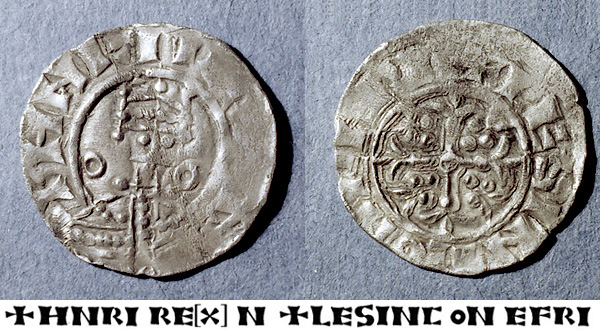
|
Type II (1102-04) - Profile left type. This example was struck by Smaewine in London
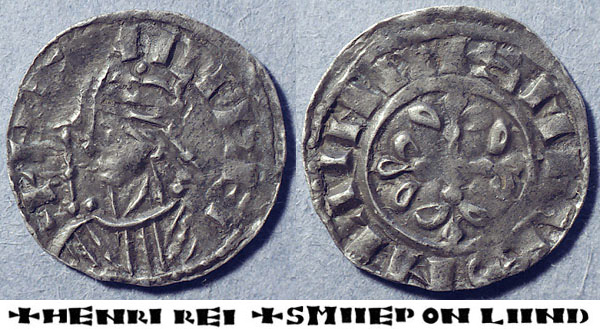
|
Type III (1104-05) - PAX and four annulets type. The annulets on the reverse may have been inspired by four solar circles witnessed in June of 1104. This example was struck by Ealdgar in London.
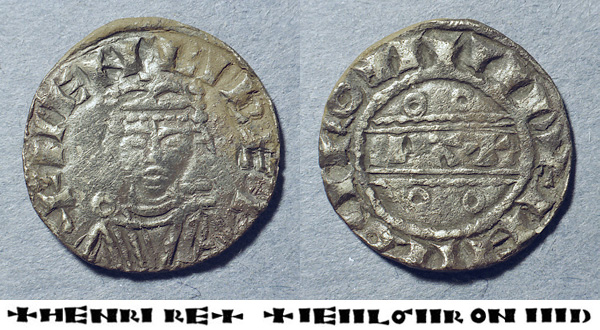
|
Type IV (1105-06) - Annulets & Piles type. This example was struck by Gocwine in Wallingford.
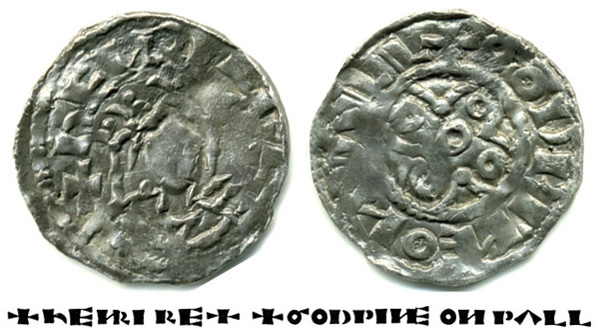
|
Type V (1106-07) - Bust with star/voided cross and fleurs type. The star may represent the comet of February, 1106. This cut half penny was struck by Godric in Hastings or Huntingdon.
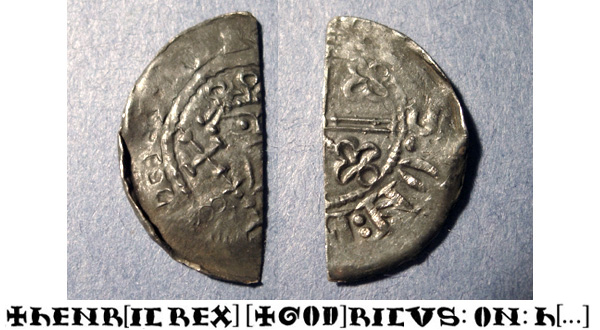
|
Type VI (1107-10) - The pointing bust penny was struck after the victory at Tinchebrai in September 1106. This coin is normally found with three stars to the right of the bust, and may represent the three comets associated with Norman victories. A variety of this coin is found with a fourth star at the end of the obverse legend, and this variety is shown here. It was struck by Aelfwine in London.
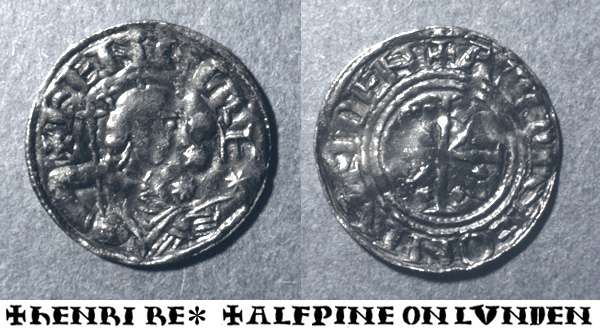
|
Type IX (1110-14) - The facing bust with star/cross in quatrefoil with four annulets penny may have been struck after the comet of 1110 (star). The example shown here was struck by Manwine in Dover. It is the only type ix penny known from this mint - unique.
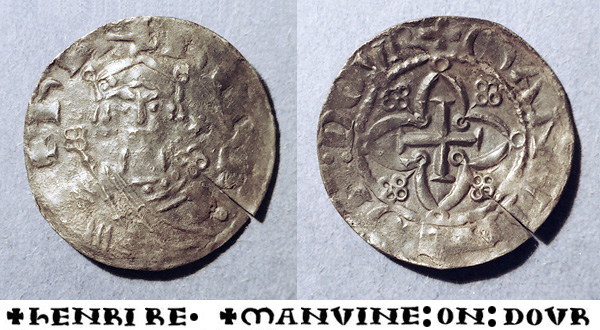
|
Type VII (1114-17) - Facing bust/quatrefoil with pyramids (comet of 1114) type. The example shown here was struck by Aelfraed in London and is rare. The spelling of the moneyer's name is unusual.
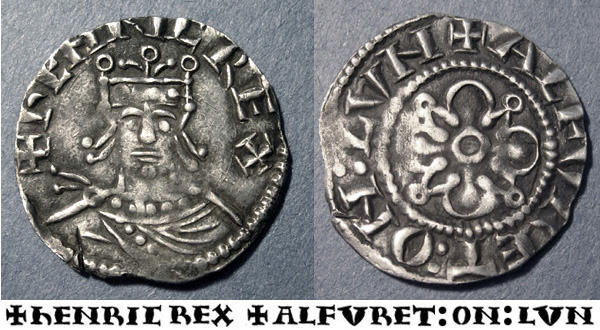
|
Type VIII (1117-19) - Bust left type. This example was struck by Godwine in Chichester and was found in the Beauvais hoard. This is the only known example struck in Chichester, and is one of the best examples of this extremely rare type.
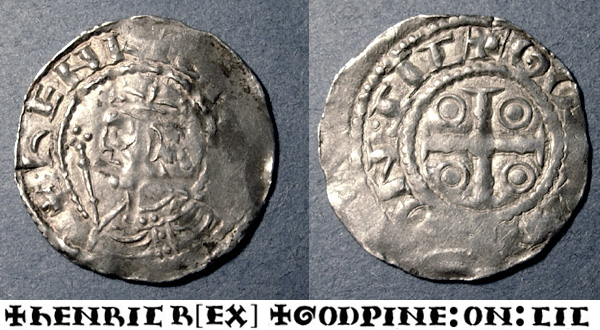
|
Type XI (1119-21) - Double inscription type. The example shown here was struck by Sperling in London and is rare. It was found near Beauvais, France (Pimprez Hoard).
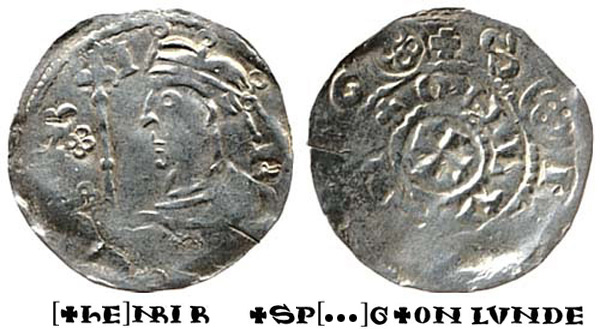
|
Type X (1121-24) - Facing bust/cross fleury type. The example shown here was struck by Algar in London and is extremely rare. It is believed to be only the second known specimen and the only one in private hands, the other being the specimen from the Lincoln Hoard, now in the collection of the City and County Museum, Lincoln
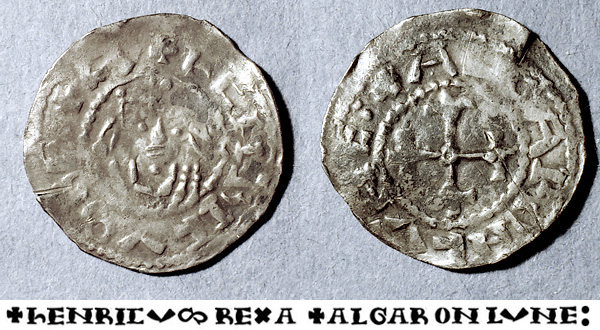
|
Type XII (1124-27) - Bust left with rosette. The rosette is a solar symbol representing the total eclipse of April 11, 1124. The example shown here was struck by Stigant in Winchester.
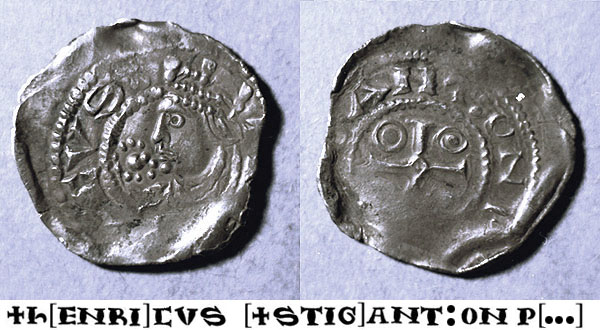
|
Type XIII (1127-30) - Bust left/star in quatrefoil type. The star represents the comet of December, 1126. The example shown here was struck by Edward in Canterbury.
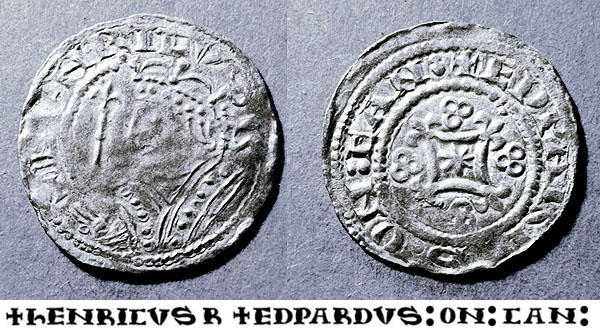
|
Type XIV (1130-32) - Facing bust with star/pellets in quatrefoil type. The example shown here was struck by Ordgar in London.
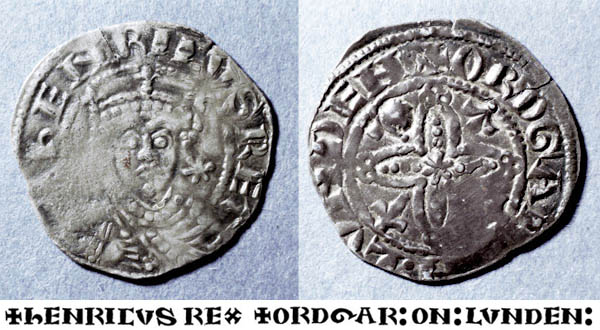
|
Type XV (1132-35) - Bust left/quadrilateral on cross fleury type. The example shown here was struck by Helhi in Exeter.
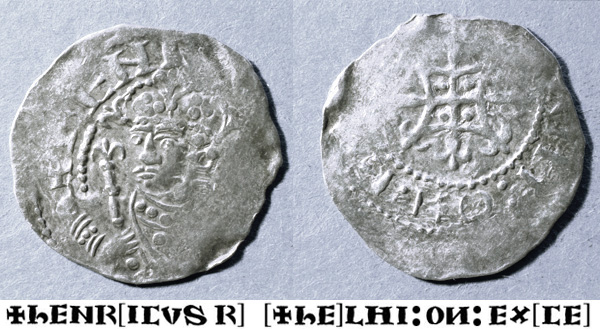
|